Free 50 30 20 Budget Template Pdf
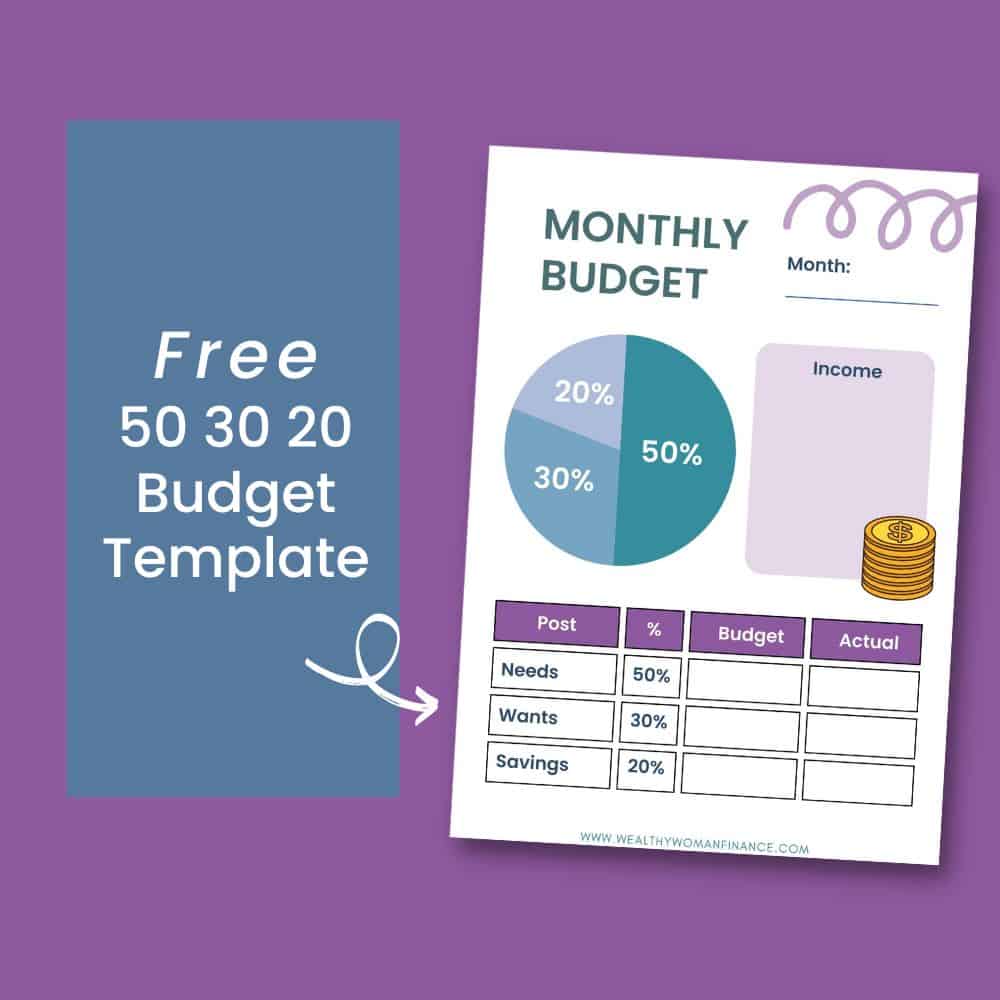
Free 50 30 20 Rule Spreadsheet To Use!
For many of us, online purchasing has made budgeting harder than ever. Retailers employ stealth ninja skills to get you to spend money on everything. And yet, if you have a 50 30 20 budget template ready to go, you’ll be in control of your money, instead of letting those big box stores control you.

What’s the 50 30 20 Budgeting Rule?
First, the 50-30-20 model is the most well-known model for managing your budget.
With this rule, you’ll start with your monthly after-tax income. Then, divide the money into 50% for needs, 30% for wants, and 20% for savings. With the 50-30-20 rule, you’ll be seeing exactly where your money goes, and if you’re overextending in certain areas.
What are the categories for the 50 30 20 rule?
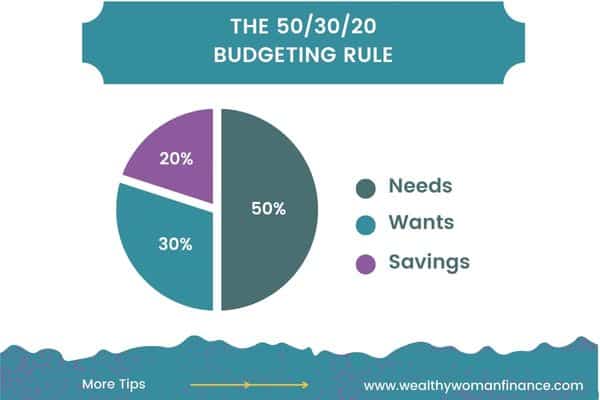
Now, let’s explore which subcategories fit under our “needs,” “wants,” and savings.”
- 50% on necessary expenses: Things like home, car, basic groceries, insurance, utilities, and necessary childcare.
- 30% on things you want: Things like entertainment, cool stuff, eating out, streaming services.
- 20% on savings (or debt): Things like retirement, emergency savings, college savings, paying off high-interest debt, your bright beautiful future
Is the 50/30/20 rule realistic?
Now, you might be thinking…is this possible? Can I really save 20%? After all, the average American saves a whopping 6% to 8% (source).
Well, first, being here means that you are not the average American. You’re learning and growing and YES you can save 20% of your income. Here are a few common issues to troubleshoot if you’re not sure:
What If My Needs Are Too Expensive?

The number one reason you’d freak out about a 20% savings rate is because your house or cars are too expensive. You have two options in this case.
1. Move to a more affordable house and/or trade out for a more affordable car. These are obviously big steps, and can be easy or hard depending on where you live. However, if you lower your big needs, you’ll save yourself years of headaches and penny-pinching while freeing up major cash (almost immediately).
And if #1 is out of the question,
2. Take some of your money from the wants section to use for your needs. (But do not touch the 20% savings!)
Either one works, and it depends on your priorities and life situation.
How do you live on a tight budget?
Now, if your budget is already tight, you may need to get creative with bringing in more money. Consider adding to your income through a part-time job or flipping items on the side. Or try a savings challenge to give you a jumpstart.
50 30 20 Budget Examples
Now, let’s look directly at a few 50 30 20 budget examples:
Let’s say you’re Julia and you bring home $3,000 a month (after taxes). You’re single and living in an urban high cost of living area.
Your budget could look something like this:
- $1500 into things you need. Probably an expensive apartment, but also food, healthcare, and public transportation.
- $900 in things you want like going out with friends on the weekend.
- $600 into paying off your credit card debt and savings for an emergency fund.
Now, let’s say your name is Katie. You are married and living in a low-cost of living area. Between you and your spouse, you bring home $5,000, but this money stretches to take care of a family of five.
Your 50 30 20 budget example may look like this:
- $2500 into things you need. This pays your mortgage, supports your 2 car mini-van lifestyle, and covers other basic household food, supplies, and medical needs.
- $1500 into things you want like the Disney streaming service, Friday night pizza, kids activities, and family vacations.
- $1000 into your savings. You’re splitting this between retirement accounts, your HSA, and college savings for the kids.
As these examples show, everyone is different! You will have different budget categories, income levels, and percentages. Play with the numbers to see what works for you.
50 30 20 Budget Plan
Now, here’s a step-by-step guide for building a 50 30 20 budget:
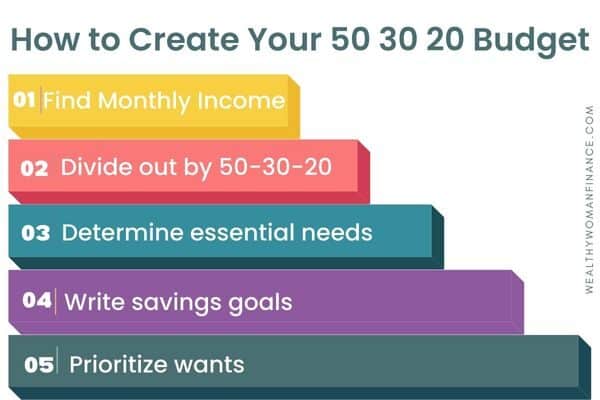
1. Find your monthly after-tax income. If your paycheck lists your yearly rate, divide this number by 12 to determine your monthly amount. If not, add up your paychecks from the last year. For example, if you get paid every other week, multiply your paycheck by 26 to find your yearly income. Then, divide by 12 to get your monthly average.
2. Divide out your monthly number by 50/30/20. Try the budget calculator below to help you.
Monthly Total x .5 = Needs. Monthly Total x .3 = Wants. Monthly Total x .2 = Savings
3. Account for your essential needs. What are the absolutes in your budget? Can you trim them up to make them easier on the budget?
4. Figure out what you’re saving for. Or if you need to pay off debts or cover emergencies first.
5. Finally, write out your wants. This is the category you have the most leeway with. Write the most important ones first.
6. Make adjustments and tweak until your numbers are right.
What are the benefits of a 50 30 20 budget?
Using the 50 30 20 budget template comes with incredible advantages. Here are just a few:

It Gives You Flexibility
You have a lot of flexibility between your needs and wants in this budget. If your needs are higher, move money from your wants into that category. If your needs are lower, you have more money to use in the wants or savings section.
It helps you see where your money is going
For many, the real trick of budgeting is keeping track of what your money is going toward. With the 50 30 20 budgeting method, you’ll know what you can afford, and have a guide to help you use your money for your greater good.
It gives you a nice balance
The numbers don’t lie! And you’re going to know immediately if your lifestyle is out of whack. If it is, no worries. Just make the necessary adjustments to get it back in balance.
The 50 30 20 Budget Template helps you save every month

The BEST benefit is that you’ll now be saving 20% each and every month. This lets the power of compound interest work for you!
Grab the Free 50 30 20 Budget Template Here
A worksheet makes things easy! So snag yours now!
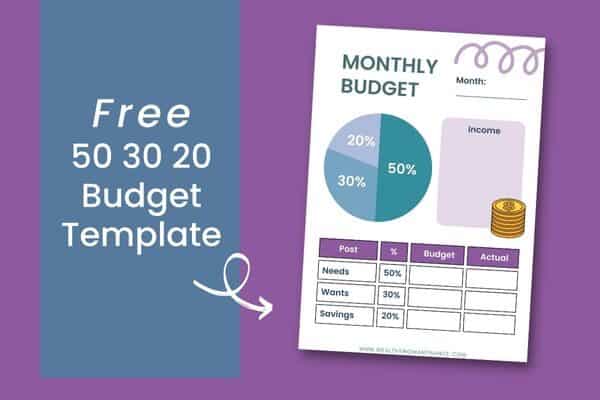
How Does the 50 30 20 Budget Compare to Other Budgets?
Now, this budget plan isn’t the only one out there. And you might be thinking, which budget is best? Here are two other plans to consider.
The 60 30 10 Rule
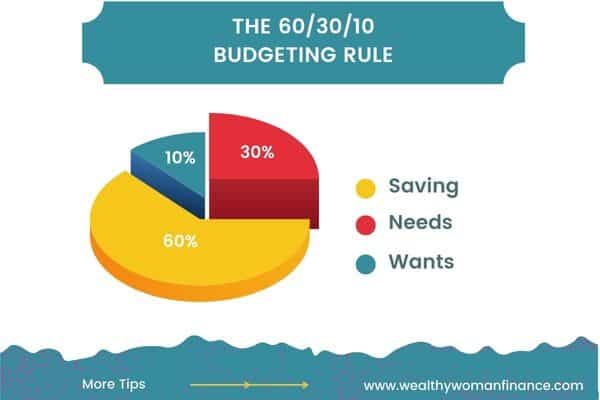
Advantages of the 60 30 10: This method has you saving 60%. It’s for the ambitious and it’s no joke! If you split up your savings into debt repayment and giving, you’d be able to do a lot with your money. Disadvantages of the 60 30 10: Saving that much money is a HUGE commitment. If you’re a beginner, or you just need to start with something steady and consistent, go with the 50 30 20 rule template.See more on the 60 30 10 rule for budgeting here >>
The 70 20 10 Budget Rule
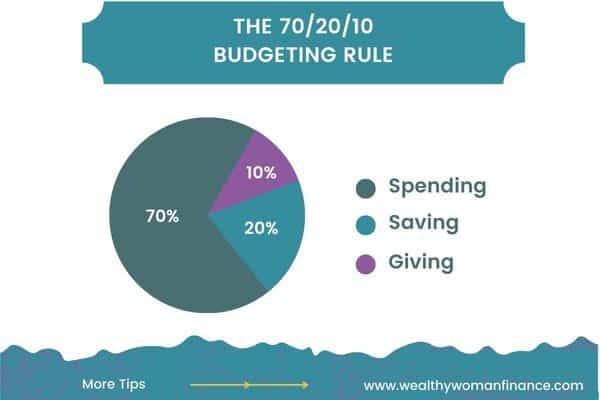
Advantages of the 70 20 10 Rule: This rule puts needs and wants together, which makes it very flexible. It also has a specific allocation for donations or debts, which is unique from other plans.
Disadvantages of the 70 20 10 Rule: Using 30% for savings or debt can be a lot if you’re already struggling to make ends meet. Consider the 50 30 20 if you’re looking to ease your way into saving more.
See more on the 70 20 10 Budget Rule here >>
Related: 30 30 30 10 budget: for if you want a separate category for housing.
Common Questions And Answers
Does the 50 30 20 rule include 401K?
In this budgeting rule, your 401k would be included under the 20% savings category.
What percent of income should go to expenses?
When using the 50 30 20 budget a total of 80% of your budget will go towards your expenses. The remaining 20% will be used for savings.
More Money Posts You’ll Love at Wealthy Woman…
- Positive Success Affirmations – getting your mindset right is the first step.
- Sinking Fund Categories that help you save!
- Smart Money Goals Examples – how to make your dreams come true.



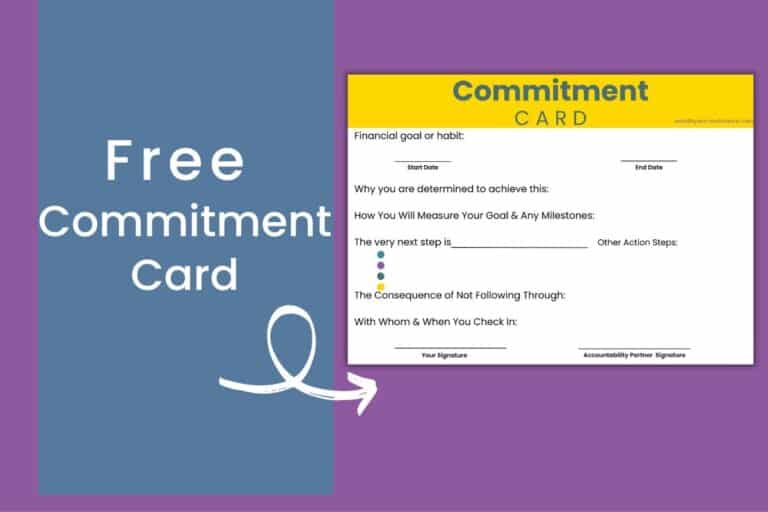


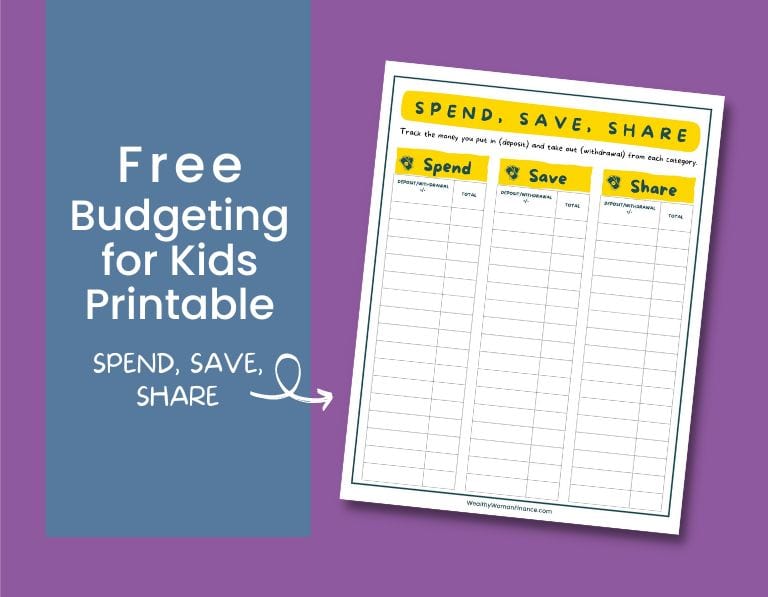
Great it’s helped me to be able to manage my money, I’ve been doing it all wrong and end up with nothing for myself, I’m fed up with it, so now I will stick to the the 50/30/20 rule and then at least I will have some money behind me. No you can’t spend the savings & investment money. Take it out of the wants money. And bills don’t get the top spot anymore, they go into the 20% category, thks it’s helped me a lot as also I retire soon and wondering what to do with my money as I don’t want to waste it, as it took all my life to save it. And it’s not much. Thank you 🙏
I’m so glad you found this helpful Gail. Thanks so much for sharing!